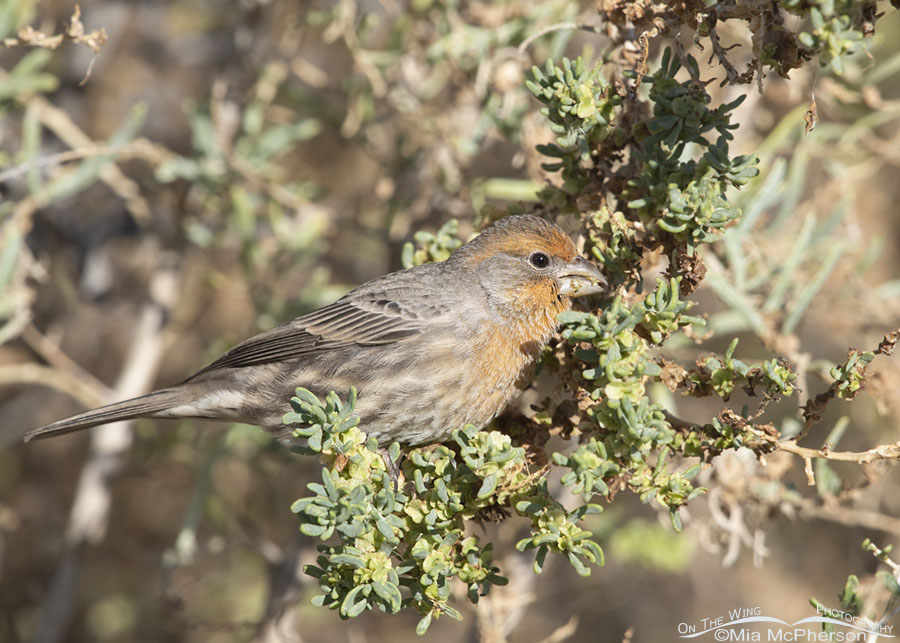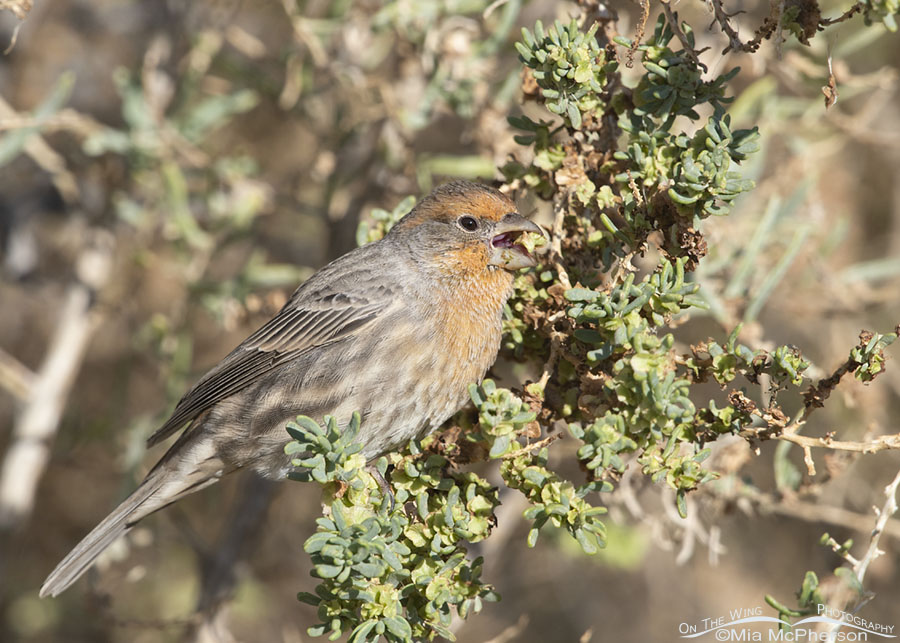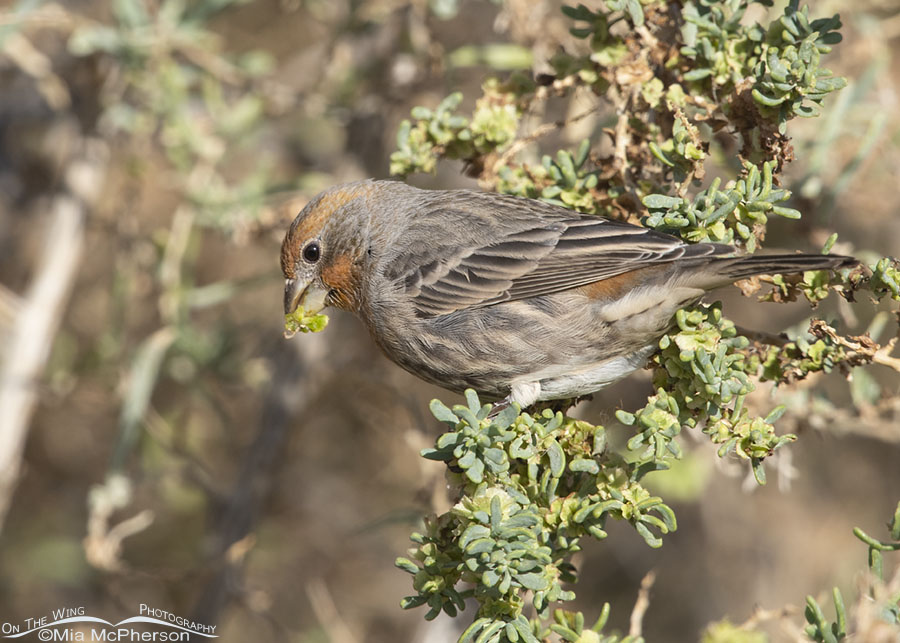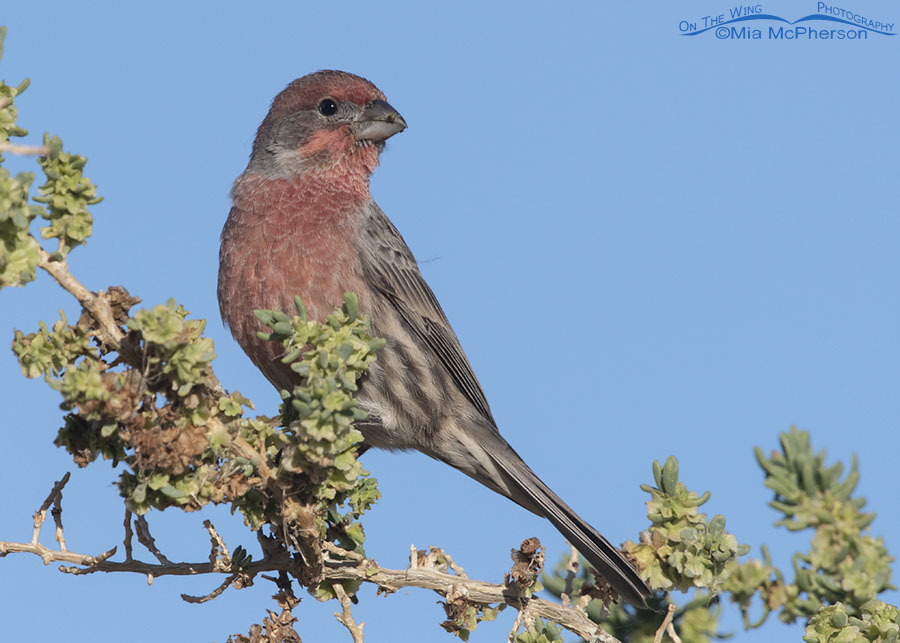 Orange variant male House Finch – Nikon D500, f7.1, 1/800, ISO 320, Nikkor 500mm VR with 1.4x TC, natural light
Orange variant male House Finch – Nikon D500, f7.1, 1/800, ISO 320, Nikkor 500mm VR with 1.4x TC, natural light
Last week I had the opportunity to take a nice long series of an orange variant male House Finch while it ate the seeds of a greasewood. Adult male House Finches normally show pinkish to rosy-red feathers on their faces, breasts and rumps and that red coloration is due to their diets. Beta-carotene in their diet produces yellow to orange colors, isocryptoxanthin produces orange colors, and echinenone produces red colors.
I would call this male House Finch an orange variant and that he may have been missing echinenone in his diet when he last molted.
 Orange variant male House Finch eating greasewood seeds – Nikon D500, f7.1, 1/800, ISO 320, Nikkor 500mm VR with 1.4x TC, natural light
Orange variant male House Finch eating greasewood seeds – Nikon D500, f7.1, 1/800, ISO 320, Nikkor 500mm VR with 1.4x TC, natural light
This male House Finch stayed perched on this greasewood branch for a relatively long period of time. I focused on him and other birds that were flying into the shrub.
House Finches are fairly common birds throughout the U.S., Mexico and into Central America but they didn’t used to be common in the eastern U.S.. Historically House Finches were found in the southwestern states but they were brought to Long Island, NY as caged birds. In 1940 a small population of House Finches were released from their cages and they spread throughout the east.
When I lived in Virginia I saw them often and they nested in my garden and under the awnings I had on my west facing windows. The male House Finches I had there were usually a brighter red than the birds I see here in Utah. Their diets may have been richer in echinenone than the birds I find here.
 Orange variant male House Finch in autumn – Nikon D500, f7.1, 1/1000, ISO 400, Nikkor 500mm VR with 1.4x TC, natural light
Orange variant male House Finch in autumn – Nikon D500, f7.1, 1/1000, ISO 400, Nikkor 500mm VR with 1.4x TC, natural light
This male House Finch gave me several different poses and I was delighted by that. I don’t see the orange variants of House Finches all that often and I am always happy to have them in my viewfinder. This one was very cooperative.
 Autumn male House Finch perched on a greasewood – Nikon D500, f7.1, 1/2500, ISO 640, +0.7 EV, Nikkor 500mm VR with 1.4x TC, natural light
Autumn male House Finch perched on a greasewood – Nikon D500, f7.1, 1/2500, ISO 640, +0.7 EV, Nikkor 500mm VR with 1.4x TC, natural light
I wanted to include this typically colored male House Finch that I photographed prior to the orange variant for comparison. He is much more rosy colored around his face and breast than the orange colored variant in the first three photos.
The next time the orange variant House Finch molts he may well look just like the red male above depending on his diet when he is molting next year.
Life is good.
Mia
Click here to see more of my House Finch photos plus facts and information about this species.


Handsome fellow! Finches are so interesting. Wonderful pics and narrative. Thanks Mia.
I lived in Dallas, Texas in the 1979s when the eastern and western populations merged. Within a couple of years they became very common. I have never yet seen the orange variant.
Fascinating – and both variants are lovely.
He’s quite pretty in fact. Lucky you!
Fascinating! Thank you so much. I had never heard of the diet related changes in their coloring before.